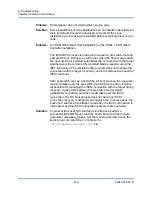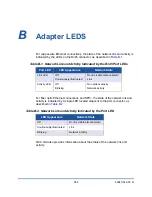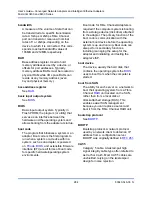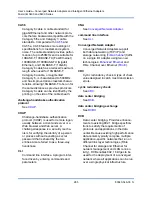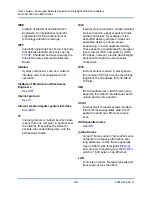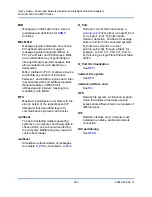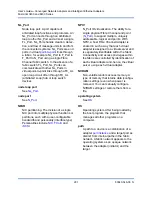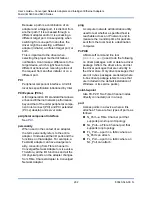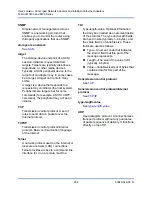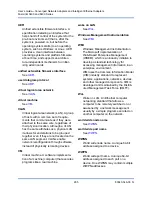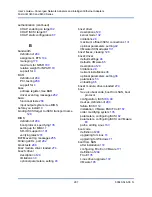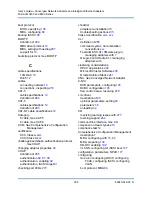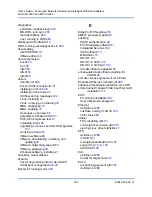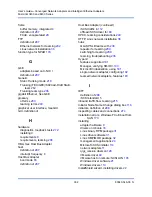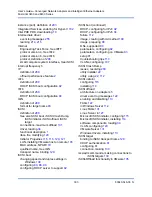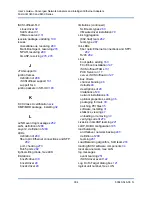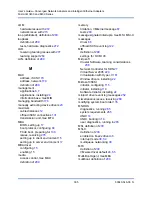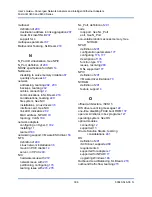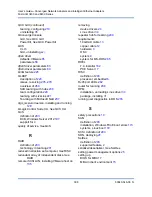
293
83840-546-00 N
User’s Guide—Converged Network Adapters and Intelligent Ethernet Adapters
FastLinQ 3400 and 8400 Series
port instance
The number of the port in the system.
Each adapter may have one or multiple
ports, identified with regard to the adapter
as port 0, port 1, and so forth. To avoid
confusion when dealing with a system
containing numerous ports, each port is
assigned a port instance number when the
system boots up. So port 0 on an adapter
might have a port instance number of 8, for
example, if it is the eighth port discovered
by the system.
QoS
Quality of service. Refers to the methods
used to prevent bottlenecks and ensure
business continuity when transmitting data
over virtual ports by setting priorities and
allocating bandwidth.
quality of service
See
RAID
Redundant array of independent disks.
Fault-tolerant disks that look like either
single or multiple volumes to the server.
reduced instruction set computer
See
.
redundant array of independent disks
See
.
RISC
Reduced instruction set computer. A
computer microprocessor that performs
fewer types of computer instructions,
thereby operating at higher speeds.
SAN
Storage area network. Multiple storage
units (disk drives) and servers connected
by networking topology.
SCSI
Small computer system interface. A
high-speed interface used to connect
devices, such as hard drives, CD drives,
printers, and scanners, to a computer. The
SCSI can connect many devices using a
single controller. Each device is accessed
by an individual identification number on
the SCSI controller bus.
SerDes
Serializer/deserializer. A pair of functional
blocks commonly used in high-speed
communications to compensate for limited
input/output. These blocks convert data
between serial data and parallel interfaces
in each direction.
serializer/deserializer
.
simple network management protocol
.
SLB
small computer system interface
Smart Load Balancing
Load balancing based on IP flow. This
feature supports balancing IP traffic across
multiple adapters (team members) in a
bidirectional manner. In this type of team,
each adapter in the team has a separate
MAC address. This team type provides
automatic fault detection and dynamic
failover to other team member or to a hot
standby member. Failover is performed
independently of Layer 3 protocol (IP, IPX,
NetBEUI); rather, it works with existing
Layer 2 and 3 switches. Switch configura-
tion (such as trunk, link aggregation) is not
required for the SLB team type to work.

